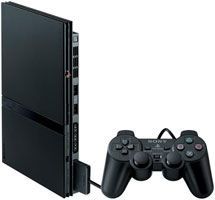How big is the team working on Killzone 3?
We are, the core team, about 135 folks right now. It’s a massive game with a lot of detail in it, with a whole lot of features. It’s a huge multiplayer game, it’s a massive single-player game. We’re supporting 3D, Move, a whole lot of stuff in there. And it’s on top of that even a whole bunch of freelancers and outsourcing staff.
Sure.
Right now, everyone’s simply locked in at this stage in the project.
We’ll get to the Killzone 3 stuff in a bit. So, Guerrilla games forms in 2000. When did your relationship with Playstation start?
Actually very early. We signed a preproduction contract for a shooter game called Marines that evolved into a contract for Killzone. And that was not day one but day two basically. Day one was us working on the technology. We won that contract by showing a great technology demo. I actually talked about all of this for the first time at a keynote at GDC Europe last month. So the game was called Marines. And on the back of that, we had a preproduction contract that we landed early 2001, and that was the beginning of the relationship between Guerrilla and Sony and also the coming into existence of the Killzone franchise.
So that was right at the launch of the PS2 or right before it?
Yeah, just about that time, really. Just after, actually.
So when you had gotten your hands on the first Playstation for the first time, where were you in your relationship with the industry? You were working in the other business-type jobs? You were more a casual observer at that point?
So me personally, the game we launched with Ubisoft was Rayman, amongst others, for PS1. Right?
Yes.
So that’s when Playstation sort of made gaming more accepted outside of the area of the PC-addict in the boys’ room. Or being a sort of a handheld kiddie vehicle. It became more accepted as a grown-up media, or as a cool thing to do if you will.
The people I have spoken to on the American side said the Playstation was the first console after, say, Sega’s early systems, to really capture the public consciousness, and grow it up a little bit. Was there a similar shift in Europe that you can speak to from your own personal experience?
I definitely think so. I think Playstation 1 did exactly that, and Playstation 2 did it again. And what I mean by do it again is take the industry and move it from two big sections, one of which is children’s games, and the other one is what I call more the attic-room, the boys’-room PC kind of culture. The background of Sony, as a consumer electronics company, meant they had a really great knack for making it more mass market and a cooler–the word cool I think is very important there–experience. Playstation made it easier for people to tell to others that, they actually play video games, and it was OK somehow. I think with Playstation 2, in the years that I worked, or the early years, the fact that it was a DVD player, I think, really, really helped conquer that position under the television, and then in the living room.
 I think that was a big shift. It was a good reason for a spouse. Typically, the crowd was boys back then. Persuading some space under the television in the living room. It was, frankly, a very nice looking machine, that PS2.
I think that was a big shift. It was a good reason for a spouse. Typically, the crowd was boys back then. Persuading some space under the television in the living room. It was, frankly, a very nice looking machine, that PS2.
That evolution already started with the PS1, that it was not nerdy looking, not scary looking. Friendly looking: that round shape and then that cool sort of square–that little black box that Sony’s been good at. So I think that is a massive, massive transformation. It’s image but it’s also performance and it’s also the multifunctional nature of the machine. All of those elements jointly, they really helped push the industry towards a much more accepted status than it was back in the early days where my American colleagues already talked to you about.

